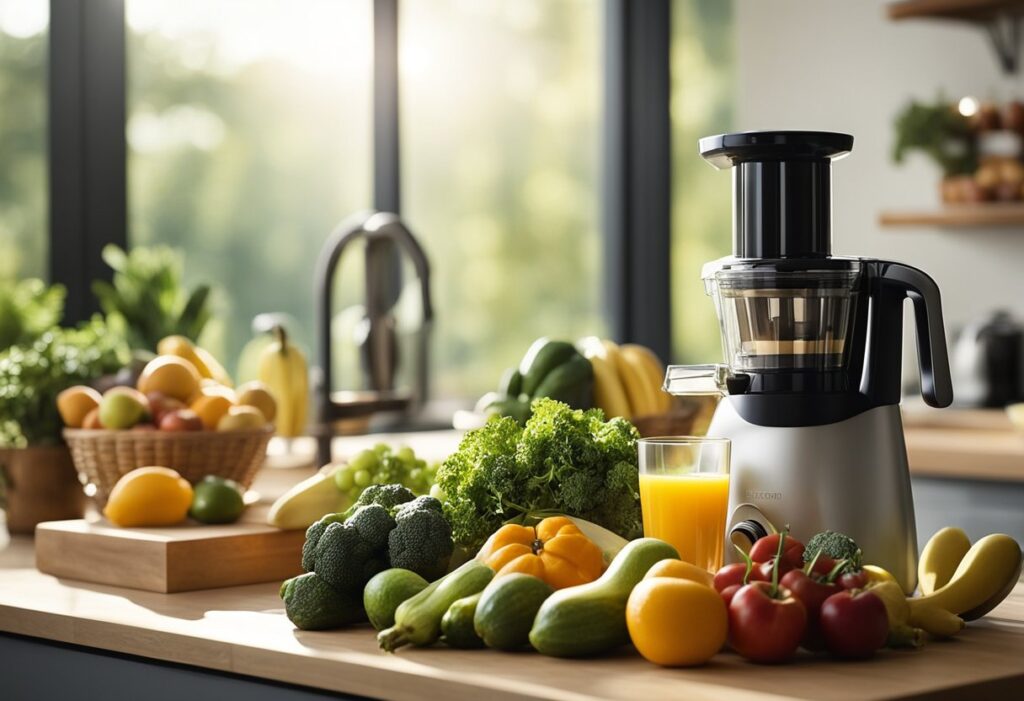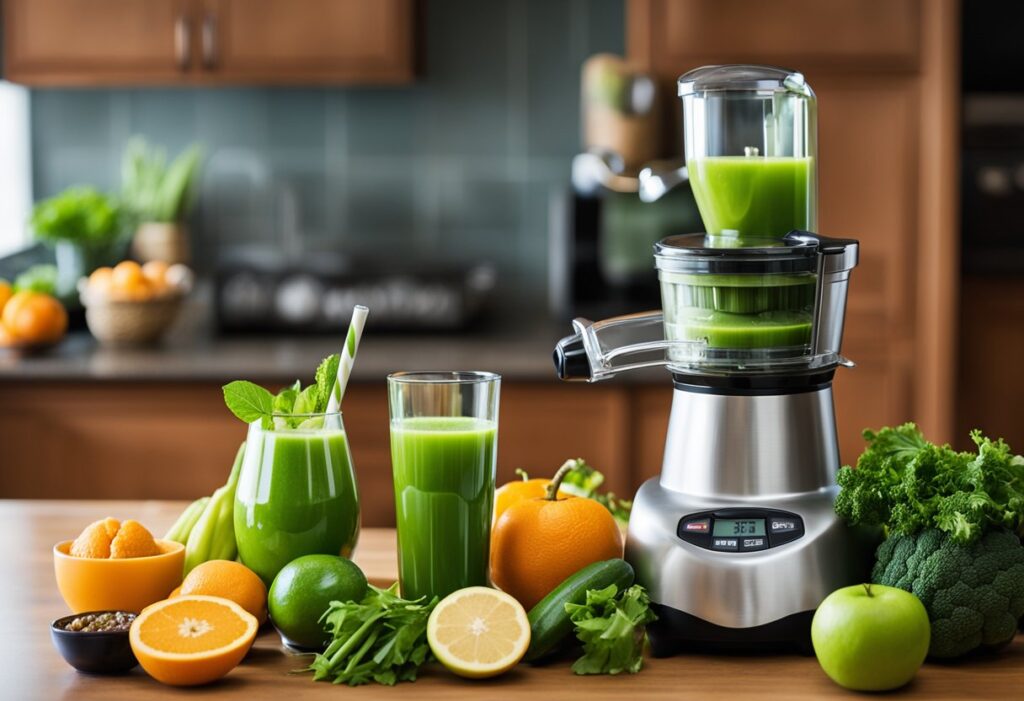Juicing has become a popular trend among health enthusiasts and weight loss seekers. It is a quick and easy way to consume a variety of fruits and vegetables in one sitting, providing the body with essential vitamins and minerals. Juicing recipes for weight loss have gained significant attention due to their ability to help people shed unwanted pounds while improving overall health.
Table of Contents

One of the main benefits of juicing for weight loss is that it helps to reduce calorie intake. Juicing removes the fiber from fruits and vegetables, making it easier for the body to digest and absorb the nutrients. This results in a lower calorie intake while still providing the body with the necessary nutrients to function properly. Additionally, juicing can help to reduce cravings for unhealthy foods, leading to better food choices and ultimately weight loss.
There are countless juicing recipes available for weight loss, each with its unique combination of fruits and vegetables. Some recipes are specifically designed to boost metabolism, while others focus on detoxifying the body. Regardless of the recipe, incorporating juicing into a healthy diet and exercise routine can lead to significant weight loss and overall improved health.
Benefits of Juicing for Weight Loss

Juicing has become a popular trend for those looking to lose weight. It involves extracting the juice from fruits and vegetables, which can be consumed as a beverage. Here are some benefits of juicing for weight loss:
Nutrient Density and Low Calorie Intake
Juicing allows for the consumption of a large amount of fruits and vegetables in one sitting, providing the body with essential nutrients and vitamins. These nutrients help to boost the immune system, improve digestion, and increase energy levels. Additionally, juicing can help to reduce calorie intake, as it is a low-calorie alternative to traditional meals.
Hydration and Metabolism Boost
Juicing can also help to keep the body hydrated, which is essential for weight loss. When the body is dehydrated, it can slow down the metabolism, making it harder to burn calories. Juicing also helps to boost the metabolism, which can aid in weight loss. The high water content in fruits and vegetables can also help to flush out toxins from the body, promoting overall health.
In summary, juicing can be a beneficial addition to a weight loss program. It provides the body with essential nutrients, helps to reduce calorie intake, and promotes hydration and a boosted metabolism.
Top Juicing Recipes for Weight Loss
Juicing has become a popular way to lose weight and improve overall health. The following juicing recipes are packed with nutrients and are perfect for those looking to shed some pounds.
Green Vegetable Juices
Green vegetable juices are an excellent source of vitamins and minerals. They are low in calories and high in fiber, making them a great addition to any weight loss plan. Some of the best green vegetable juices for weight loss include:
- Spinach and Kale Juice: This juice is packed with antioxidants and is great for boosting metabolism. To make this juice, blend together spinach, kale, cucumber, celery, and green apple.
- Cucumber and Mint Juice: This refreshing juice is perfect for hot summer days. To make this juice, blend together cucumber, mint, lemon, and ginger.
- Broccoli and Carrot Juice: This juice is loaded with vitamin C and is great for boosting the immune system. To make this juice, blend together broccoli, carrot, celery, and apple.
Citrus Fruit Juices
Citrus fruits are a great source of vitamin C, which is essential for weight loss. They are low in calories and high in fiber, making them an excellent addition to any weight loss plan. Some of the best citrus fruit juices for weight loss include:
- Grapefruit Juice: Grapefruit is known for its fat-burning properties. To make this juice, blend together grapefruit, orange, and lemon.
- Lemon and Ginger Juice: This juice is great for detoxifying the body and boosting metabolism. To make this juice, blend together lemon, ginger, and honey.
- Orange and Carrot Juice: This juice is packed with vitamin C and is great for boosting the immune system. To make this juice, blend together orange, carrot, and ginger.
Spicy Metabolism-Boosting Juices
Spicy juices are great for boosting metabolism and burning fat. They are also packed with antioxidants, which are essential for weight loss. Some of the best spicy juices for weight loss include:
- Cayenne Pepper and Lemon Juice: This juice is great for boosting metabolism and burning fat. To make this juice, blend together lemon, cayenne pepper, and honey.
- Turmeric and Ginger Juice: This juice is great for reducing inflammation and boosting metabolism. To make this juice, blend together turmeric, ginger, and honey.
- Green Tea and Lemon Juice: Green tea is known for its fat-burning properties. To make this juice, brew green tea and blend it together with lemon and honey.
By incorporating these juicing recipes into your diet, you can boost your metabolism, burn fat, and improve your overall health.
Juicing Tips and Tricks
Choosing the Right Ingredients
When it comes to juicing for weight loss, it is important to choose the right ingredients. The best ingredients for weight loss are those that are low in calories but high in nutrients. Some great options include leafy greens like kale and spinach, as well as low-sugar fruits like berries and citrus.
It is also important to choose organic produce whenever possible. Organic fruits and vegetables are free from harmful pesticides and chemicals, which can disrupt the body’s natural processes and hinder weight loss.
Juicing Techniques for Maximum Nutrition
To get the most nutrition out of your juicing, it is important to use the right techniques. One important technique is to juice your produce slowly. This allows the juicer to extract as much nutrition as possible from the fruits and vegetables.
Another important technique is to juice a variety of produce. This ensures that you are getting a wide range of nutrients in your juice. You can also add in superfoods like chia seeds or spirulina to boost the nutritional content of your juice.
In addition, it is important to drink your juice immediately after juicing. This ensures that you are getting the maximum amount of nutrition from your juice. If you need to store your juice, make sure to do so in an airtight container in the refrigerator for no more than 24 hours.
By choosing the right ingredients and using the right techniques, you can create delicious and nutritious juices that can help you reach your weight loss goals.
Incorporating Juicing into a Healthy Diet
When it comes to weight loss, incorporating juices into a healthy diet can be a great way to increase nutrient intake while reducing calorie intake. However, it’s important to remember that juices should not replace whole foods entirely. Here are some tips for balancing juices with whole foods and meal planning with juices.
Balancing Juices with Whole Foods
While juices can be a great way to get a quick boost of nutrients, it’s important to also consume whole foods to ensure a balanced diet. Juices should not replace meals entirely, but can be used as a supplement to increase nutrient intake. It’s recommended to consume at least 5 servings of fruits and vegetables per day, and juices can help to meet this requirement.
When making juices, it’s important to include a variety of fruits and vegetables to ensure a range of nutrients. It’s also important to include sources of protein and healthy fats in the diet, such as nuts, seeds, and lean meats.
Read also : Decadent Puff Pastry Dessert Recipes to Try
Meal Planning with Juices
Incorporating juices into meal planning can be a great way to reduce calorie intake while still feeling satisfied. For example, a juice can be consumed as a mid-morning snack, followed by a balanced lunch and dinner. It’s important to ensure that meals are balanced with a variety of nutrients, including protein, healthy fats, and complex carbohydrates.
When planning meals with juices, it’s important to consider the calorie content of the juice and adjust the rest of the meal accordingly. For example, if a juice is high in calories, a smaller portion of a complex carbohydrate such as brown rice or quinoa may be appropriate.
Overall, incorporating juices into a healthy diet can be a great way to increase nutrient intake and reduce calorie intake. However, it’s important to balance juicing recipes for weight loss with whole foods and consider calorie intake when meal planning.

